The Benefits of Tent Fumigation for Safeguarding Your Home from Drywood Termites
- Apr 23
- 3 min read
Drywood termites are infamous for causing severe structural damage in homes, often remaining hidden for years. Their ability to compromise wood integrity can lead to repair costs that escalate quickly—an average of $3,000 to $5,000 for significant damage. One of the best ways to eliminate these persistent pests is tent fumigation. This approach covers your entire home with a tent and introduces a gas that penetrates every nook and cranny, ensuring no area is left untreated. Let’s explore how tent fumigation works and the significant benefits it offers in protecting your home.
Understanding Drywood Termites
Drywood termites are a common threat in many regions, breeding and living in the wood of the homes they invade. Unlike subterranean termites, they do not need soil contact, allowing them to infest wood directly. They consume wood from the inside out, leaving little visible evidence until substantial deterioration occurs.
Many homeowners do not recognize the signs of drywood termite infestations—like hollow-sounding wood, frass (the small pellets of termite droppings), or visible holes—until the damage reaches a critical level. According to studies, early detection can reduce repair costs by as much as 30%.
The Process of Tent Fumigation
Tent fumigation is a specialized treatment that requires professional expertise. Here’s a concise overview of how the process unfolds:
Preparation: Homeowners must remove all plants, pets, and any items that could be affected from the house. This step is vital for ensuring safety during the fumigation.
Sealing the Home: The next step involves sealing the house with a tent, a specialized material that keeps the fumigant concentrated within the structure.
Application of Fumigant: Once the tent is secured, licensed professionals introduce a gas like sulfuryl fluoride. This fumigant penetrates all wood surfaces, effectively killing termites at every stage of their life cycle.
Aeration: After the treatment period, which usually lasts about 3 days, the tent is removed, and the house is aerated to eliminate any remaining gas.
Benefits of Tent Fumigation
While various methods can combat termites, tent fumigation stands out due to its comprehensive advantages.
Complete Termite Elimination
Tent fumigation guarantees the eradication of drywood termites. This method reaches areas other treatments may miss, effectively destroying the entire population, including eggs and larvae. For example, a single colony can consist of thousands of termites—only full fumigation can ensure complete elimination.
Efficiency in Treatment Time
The entire fumigation process usually takes just a few days, providing a swift solution compared to localized treatments, which might require several applications over weeks or months.
Safety Assured
The fumigants used are designed for effective pest control but are also safe for humans and pets post-treatment. Conducted by professionals, tent fumigation minimizes risks and ensures a clean return to your home.
Cost Savings Over Time
Though the initial cost of tent fumigation may seem higher than other methods, it can save homeowners significant sums in the long run. By eradicating the infestation immediately, you prevent additional damage that could lead to costly repairs, which can average about $3,300 for a single infestation if left untreated.
Protecting Structural Integrity
Choosing tent fumigation not only targets the pest issue but also protects your home’s structural integrity. Repairing termite damage can take a serious toll on your finances, and stopping these pests early allows your home to last longer.

What to Expect After Tent Fumigation
Once the fumigation is complete, homeowners can anticipate several key steps:
Post-Treatment Inspection: Schedule a follow-up inspection to determine if the fumigation effectively eliminated the termites and if further measures are necessary.
Implement Preventive Strategies: Take proactive steps to reduce the chance of future infestations. For instance, reducing humidity in potential termite hotspots and applying wood treatments can be beneficial.
Ongoing Monitoring: Continue to monitor for signs of reinfestation in the years after treatment. Regular inspections can help catch potential threats early.
In Summary
Tent fumigation is a powerful and effective method for protecting your home from drywood termites. By opting for this treatment, you ensure that your living space remains secure and free from these destructive pests. It not only removes current infestations but also provides peace of mind against future threats.
As pest control methods evolve, staying informed about the best practices can help homeowners act decisively. Recognizing the early signs of termite activity can empower you to protect your home more effectively.
Taking prompt action against drywood termites today can save you from unnecessary trouble tomorrow. Consider consulting with a pest control expert to evaluate your home and discuss how tent fumigation can benefit you.

By understanding and employing effective termite control measures like tent fumigation, you can ensure your home remains a safe haven, free from the threat of drywood termites.












Comments